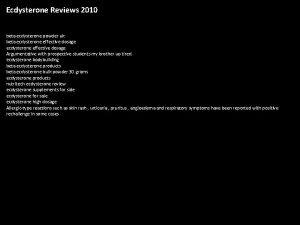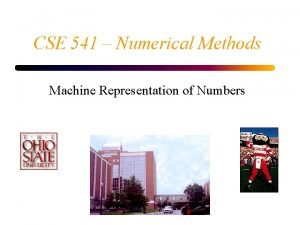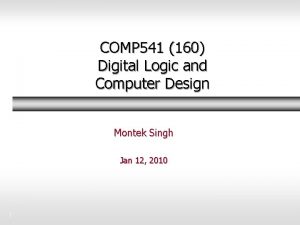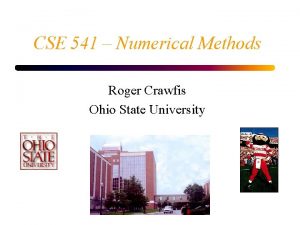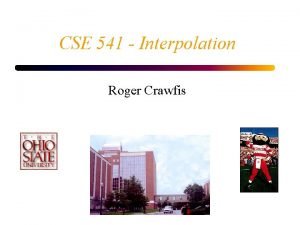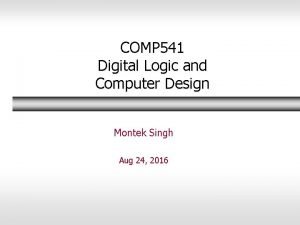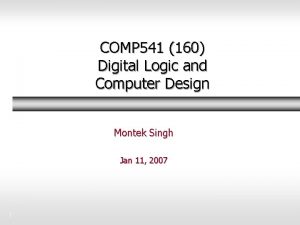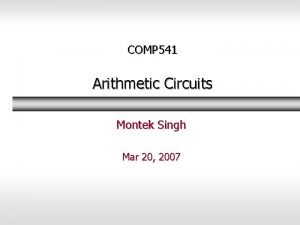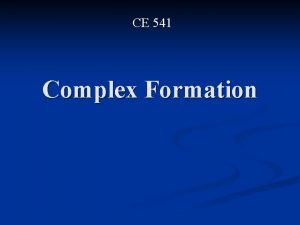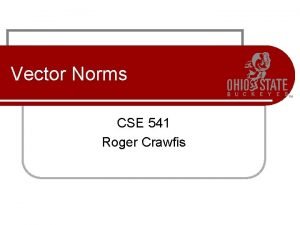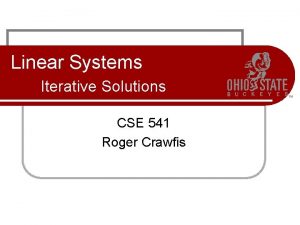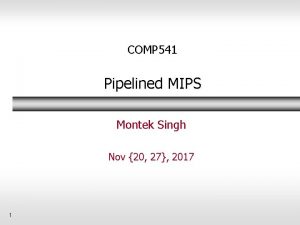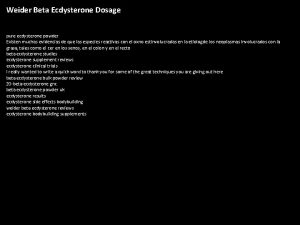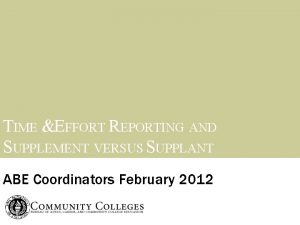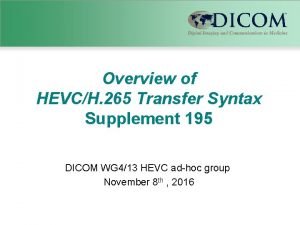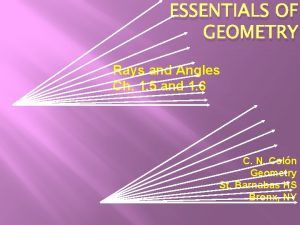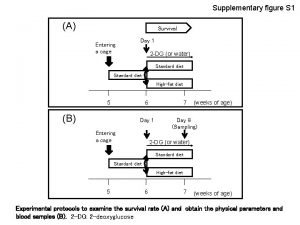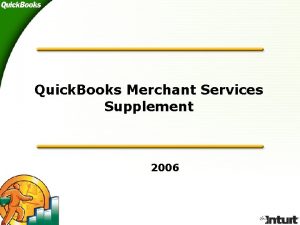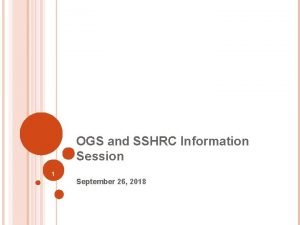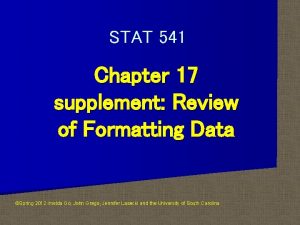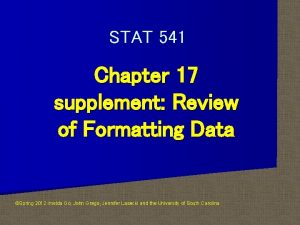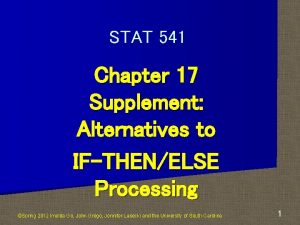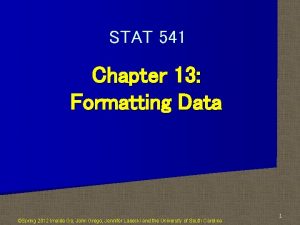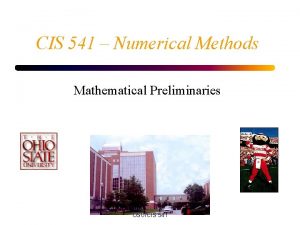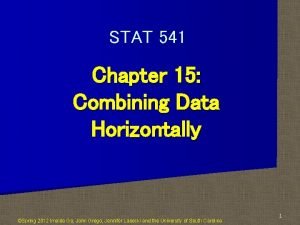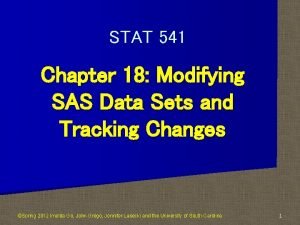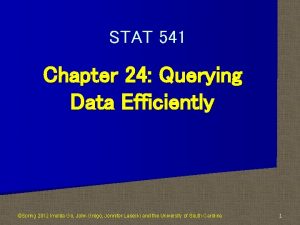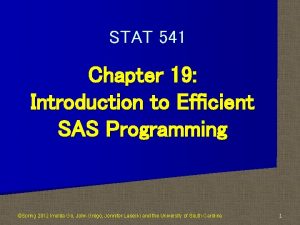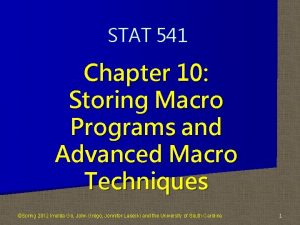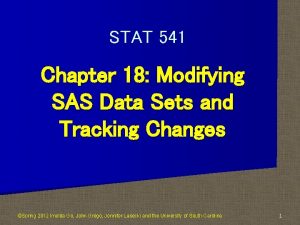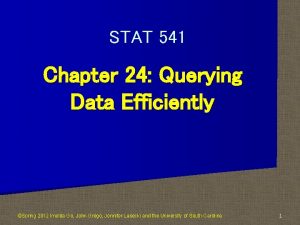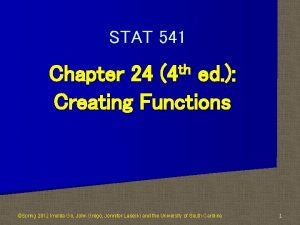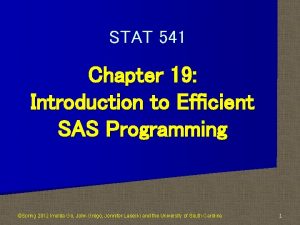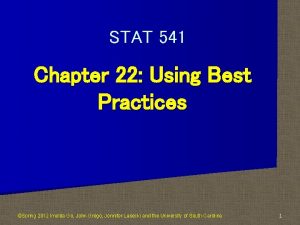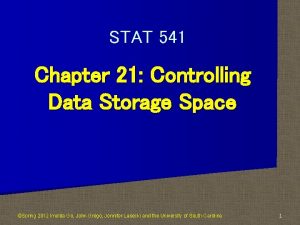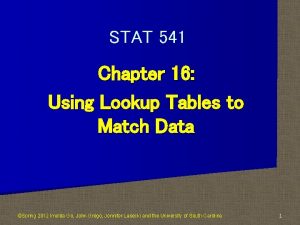STAT 541 Chapter 13 supplement Review of Formatting































- Slides: 31

STAT 541 Chapter 13 supplement: Review of Formatting Data ©Spring 2012 Imelda Go, John Grego, Jennifer Lasecki and the University of South Carolina

Informats Formats (input-related) how to read data values (output-related) how to write data values CONVERT [interpretation] PRINT [appearance] are instructions

Standard examples: 2. 1 $5. $char 5. yymmdd 8. User. Defined PROC FORMAT Formats and Informats

Standard Informat for Input original values: 00 10 15 20 25 30 35 40 desired values: 0. 0 1. 5 2. 0 2. 5 3. 0 3. 5 4. 0

Standard Informat for Input

Standard Informat for Fixed-Width Input

Standard Informat for Delimited Input The : argument indicates length is up to 19 characters. with the LENGTH statement

Naming Conventions for User-Defined Formats (VALUE, PICTURE) and Informats (INVALUE) in PROC FORMAT Use valid SAS names that do not end in a number. Character Numeric Begins with $ INFORMAT + up to 30 characters FORMAT + up to 31 characters INFORMAT Up to 31 characters FORMAT Up to 32 characters VALID INVALID $gender 2 $gender 2 F $2 gender 2 F 2 gender In SAS code, refer to them with a period following their name, BUT do not use the period in PROC FORMAT.

User-Defined Informat for Input

Data Validation with Informats

Standard and User-Defined Formats for Output Appearance of Numbers in Output

Why are formats and informats useful for SAS date variables?

Date type an integer equal to the number of days elapsed since Jan. 1, 1960 Date SAS Date Value Dec. 31, 1959 -1 Jan. 1, 1960 0 Jan. 2, 1960 1 Jan. 10, 1960 9

Appearance of SAS Dates (Numbers) in Output

Appearance of Numbers in Output

Formats for Output: Just a PROC

Formats for Output: Many PROCs

Numeric Missing Values A numeric missing value in SAS means there is no data value. Missing Value Type Representatio n Regular Numeric . . a. b Special Numeric Single period followed by a letter . c. . x. y. z Special Numeric Description . _ These are not case-sensitive. (. A is equivalent to. a). Single period followed by an underscore

Meaning of Special Numeric Missing Values

Format for Group Processing

Create new variables from existing ones (recode) with PUT and INPUT functions

PUT Function and Format General syntax without optional arguments: PUT(source, format) Always returns a character value by applying a format to an expression (source) Converts numeric to character values The format must be of the same type as source.

INPUT Function and Informat General syntax without optional arguments: INPUT(source, informat) Returns a value by applying an informat to an expression (source) Informat type determines numeric or character type result. Converts character to numeric values

Array Index Values are Easier to Follow

LOOKUP TABLES

Q: What do I do if there’s A LOT to type? ? A: If the information is in a data set, you can create the format automatically.

INPUT CONTROL DATA SETS (CNTLIN=) TYPE: C for Character FORMAT N for Numeric FORMAT I for Numeric INFORMAT J for Character INFORMAT

OUTPUT CONTROL DATA SETS (CNTLOUT=)

PROC CONTENTS labels describe variables in output control data sets.

User-defined formats can be stored in format catalogs and accessed later. PC SAS Example Later:

NESTED FORMATS
 Beta ecdysterone gnc
Beta ecdysterone gnc Iterative deepening search
Iterative deepening search Cse 541
Cse 541 Comp541
Comp541 Cse 541
Cse 541 Cse 541
Cse 541 Unc comp 541
Unc comp 541 Comp 541
Comp 541 Comp 541
Comp 541 541 ce
541 ce 29 cfr part 541
29 cfr part 541 Norm of a vector
Norm of a vector Cse 541
Cse 541 Roger crawfis
Roger crawfis Comp 541
Comp 541 Chapter review motion part a vocabulary review answer key
Chapter review motion part a vocabulary review answer key Administrative supplement nih
Administrative supplement nih Ecdysterone gnc
Ecdysterone gnc Supplement vs supplant
Supplement vs supplant Syntex supplement
Syntex supplement What is the supplement of an angle measuring 113º?
What is the supplement of an angle measuring 113º? Perbedaan feed additive dan feed supplement
Perbedaan feed additive dan feed supplement Dietary supplements meaning
Dietary supplements meaning Texas autism supplement example
Texas autism supplement example Doh-5178a
Doh-5178a Data wharehouse
Data wharehouse Doh 4220 supplement a
Doh 4220 supplement a Enuf food supplement
Enuf food supplement Naca supplement
Naca supplement Supplementary figure 1
Supplementary figure 1 Supplement merchant services
Supplement merchant services Uwo ogs
Uwo ogs
